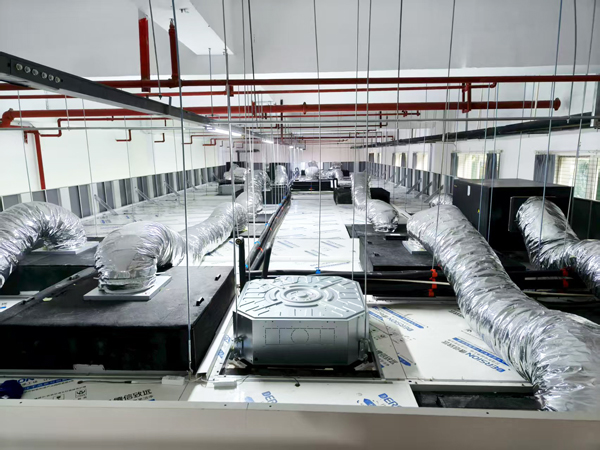When designing a modular cleanroom, airflow planning is critical. Many clients request a “unidirectional” or “vertical laminar flow” setup—but what do these terms really mean? Today, let’s explore the airflow patterns commonly used in modular cleanrooms, and how each one affects cleanliness, energy use, and efficiency.
Modular cleanrooms rely heavily on proper airflow organization. The airflow pattern directly impacts the cleanroom’s ISO classification, operational cost, and contamination control. There are three main airflow types used in modular cleanrooms, each suited to different cleanliness levels and production environments.
1. Unidirectional Flow (Laminar Flow)
Unidirectional flow refers to air moving at a constant speed in a single direction—either vertically (top to bottom) or horizontally (side to side). After passing through HEPA/ULPA filters, clean air uniformly sweeps across the workspace, pushing contaminants out like a piston.
Two types of unidirectional flow:
- l Vertical Unidirectional Flow:
Air flows downward from the ceiling and exits through raised floors or low-level side return vents. Ideal for high-grade cleanrooms (ISO Class 1–5), such as semiconductor or pharmaceutical production.
- l Horizontal Unidirectional Flow:
Air enters from one wall and exits through the opposite wall. Suitable for localized clean zones or clean benches.
Pros:
- Provides high cleanliness control
- Efficient at removing contaminants
Cons:
- High energy consumption
- Higher construction and maintenance costs
2. Non-Unidirectional Flow (Turbulent Flow)
Non-unidirectional flow involves irregular, turbulent air patterns, typically achieved by introducing clean air from the ceiling and returning it through low wall vents. The air is not uniformly directed, but it dilutes and replaces contaminated air through mixing.
This approach is commonly used in ISO Class 6–8 modular cleanrooms, such as:
- Packaging areas
- l Electronic assembly lines
- General-purpose clean zones
Pros:
- Lower energy and construction cost
- Suitable for moderate cleanliness requirements
Cons:
- Less effective at removing localized contaminants
- Requires frequent air exchange to maintain standards
3. Mixed Flow Design
Mixed flow combines the strengths of both unidirectional and non-unidirectional patterns. In this setup:
- Critical areas (e.g., filling zones, inspection lines) use unidirectional flow
- Supporting zones (e.g., equipment storage, corridors) use turbulent flow
Pros:
- Balances energy efficiency with cleanliness
- Flexible design for complex production needs
Cons:
- Requires careful planning and airflow zoning
- More complex validation and monitoring
Conclusion: Choosing the Right Airflow
Choosing the right airflow pattern depends on your product, process, and ISO cleanroom classification goals. A well-designed modular cleanroom should not only meet regulatory requirements, but also minimize energy use and operating costs.
At Dexin Zhiyuan, we specialize in custom modular cleanroom solutions tailored to your specific industry—from pharmaceuticals and electronics to laboratories and manufacturing plants.
Need help choosing the right airflow strategy? Contact us for expert design consultation.
Post time: Aug-04-2025

